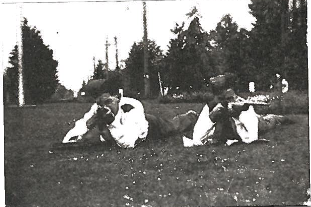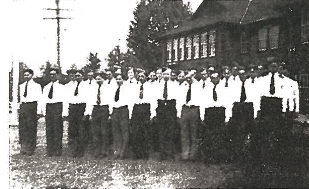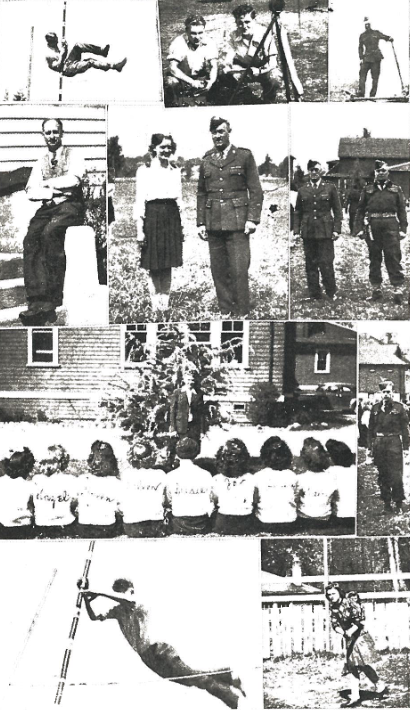1940-41
The Threat of War at P.S.H.S.
This year, World War II was a central theme throughout the yearbook. Beginning with the Principle’s Message, where the war is discussed exclusively, to the common theme throughout the clubs, sports, and personnel sections, it is clear that the war effort was at the forefront of everyone’s thoughts. Mr. Burton, the principle, called out the the complacency that had taken place in Europe and applauded Winston Churchill’s stance against it. He backs this up with the creation of the high school cadets, and is essentially vowing that P.S.H.S. would do everything they could to ensure they would not be complacent in the war [1]. There is nothing specific about the cadets in the
yearbook for this year, but the 1941-42 yearbook states that this was the first year that it took place, and based on the attitudes and comments that were made in the yearbook, it is plausible that this club was popular, but did not make it into the yearbook. Despite the backing of the principle, and likely the majority of the community, the idea of cadet training in school was controversial, as some saw the militarism and nationalism as an unnecessary evil to put on the boys during school hours. However, the Royal Air Force, Navy, and Army sponsored the Cadets during World War II, and they were found in nearly every major high school across Canada [2].
1941-42

By the 1941-42 school year, the Cadets club was becoming one of the most important school functions. Credit was now given for cadet work and it was squeezed into whatever extra time there was available for training. They practiced many different drills under the instruction of Mr. Stradiotti and Mr. C. McKenzie, in order to prepare them for inspection and potential recruitment for World War II. They would also practice drills with neighboring schools, specifically to practice the battalion drills. Beyond that, they would also

practice rifle shooting in the basement of the school, under the auditorium. This was one of the efforts that was being done by the school to help the war on the home front. There was a significant amount of students who attended Philip Sheffield High who were currently enrolled in the armed forces, so it is arguable that this club was the most important function of the school at the time. Nearly every extra resource and time was being pooled towards the club [3].
1942-43
The cadet training for this semester ramped up even further. Every boy enrolled at P.S.H.S. took part of the marching exercises at least one time a week. Those who were keen or excelled at marching, there were other areas of the cadets that they took part in, such as airplane recognition, knot tying, first aid, and tumbling. The war effort was reaching it’s peak on the home front, and that was becoming increasingly obvious through the yearbook information [4].
1943-44
This year, cadet activities continued to rise in importance. This year, the Grade 10 and above girls were inducted into the Cadet corp, which was new starting this year. This alone, points to how serious the threat of war was at the home front if they were beginning to enlist the girls in cadet training. Every day, there was training in functional skills such as knot tying, map reading, airplane identification, and more. Then, in every moment of free time, the cadets practiced marching and drills in preparation for their exams and potential enlistment [5].

References
[1] Philip Sheffield High School Consamannum 1940-41, The Reach Gallery & Museum.
[2] Cynthia Comacchio, “The Culture of Modern High”, The Dominion of Youth: Adolescence and the Making of Modern Canada 1920-1950. Wilfred Laurier Press, 444.
[3] Philip Sheffield High School Consamannum 1941-42, The Reach Gallery & Museum.
[4] Philip Sheffield High School Consamannum 1942-43, The Reach Gallery & Museum.
[5] Philip Sheffield High School Annual 1943-44, The Reach Gallery & Museum.